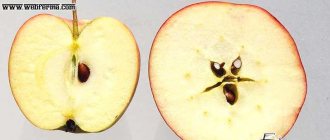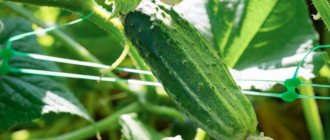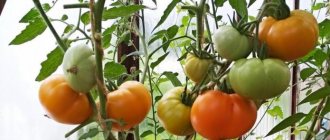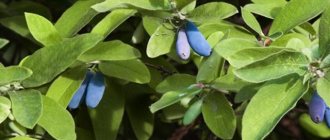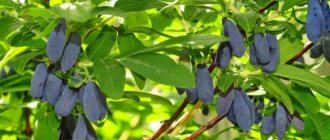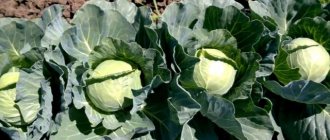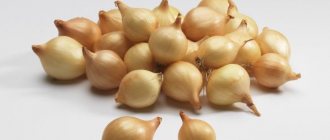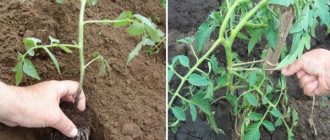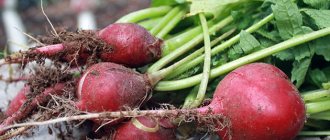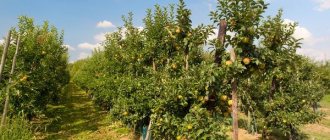Cucumber Hermann F1 - This is a gardener's dream. High-yielding, ultra-early, without bitterness, without pollination. Unpretentious, disease-resistant, suitable for canning. The Herman variety grows well both in greenhouses and in open ground. Thanks to these characteristics of the Herman cucumber, we can safely say that Herman F1 the most successful cucumber variety of the last decade.
Description of the cucumber variety
Herman is a hybrid variety. It is characterized by early ripening and high productivity. The main direction for cultivation is garden plots and small farms.
Both protected and open ground are suitable for growing Herman. The plant is medium-sized and determinate - the growth of the main stem is limited. This variety has a female type of flowering and a parthenocarpic type of pollination - pollination by bees is not required for the ovaries. They are formed in the axils of the leaves in bunches - each with 6-7 ovaries. The leaf size is medium, the color is dark green.
Fruiting begins 40-45 days after the shoots appear. The fruits are of the gherkin type - they reach a length of 8-10 cm. They have a cylindrical shape, a coarsely tuberous surface, the color is usually dark green, but depending on the lighting it can be lighter. Characterized by mild spotting, short white stripes on the skin, and a faint waxy coating. The fruits are distinguished by frequent pubescence and white spines.
One fruit weighs approximately 70-100 g, the diameter is on average 2.5-3 cm. German cucumbers are characterized by tasty and crispy pulp, lack of bitterness even with a lack of moisture. The taste is sweetish, the density is medium, the seeds are small.
Herman's productivity is up to 20-25 kg per 1 sq. m with a 95 percent yield of marketable products. Cucumbers are consumed not only fresh, but also used for canning.
History of the variety's creation
Many of the productive varieties and hybrids of cucumbers that are resistant to adverse weather conditions and diseases were bred by breeders from the Netherlands. Due to their undeniable advantages, these varieties of cucumbers have long been known to Russian vegetable growers, who constantly buy new products from Dutch breeders.
The cucumber hybrid Herman is also a variety developed by Dutch specialists. German was included in the Russian State Register in 2001 and is recommended for cultivation in garden beds, in film greenhouses and greenhouse conditions.
Due to the high yield of the variety, many summer residents and farmers grow the German hybrid on their farms for further sale of products.
Advantages and disadvantages
Herman is a popular cucumber variety in various regions. This is due to its many advantages:
- the ability to grow not only in a greenhouse, but also in open ground;
- the variety is unpretentious and easy to grow;
- high resistance to diseases;
- parthenocarpic pollination - no bees required;
- after germination, the crop is formed in an ultra-short time;
- the harvest is stable and high, commodity indicators are at a decent level;
- The fruits have excellent taste, no bitterness;
- universal use - fresh, for preservation;
- storage without yellowing.
Against the background of such positive characteristics, the German variety has few disadvantages.
These are poor tolerance to transplantation, sensitivity to low temperatures (both air and soil), and instability to rust.
The video review will tell you about the most productive variety of German cucumbers:
Soil requirements
Taking into account one of the main disadvantages of the variety, an important requirement for the soil is its temperature. It should not be below 12 degrees, otherwise its high fertility will not help - the seeds will not germinate well, the adaptation of the seedlings will be unsatisfactory, and as a result the yield will suffer.
Another important requirement for soil is its fertility. It is increased with humus, peat, sand, and fertilizers. Specific names and their proportions depend on the characteristics of the soil in a particular area and in a given region. The classic combination is:
- humus - bucket;
- peat and sand - half a bucket each;
- ammonium nitrate, potassium nitrate and superphosphate - a tablespoon each.
Fertilizers are applied in this quantity per 1 square meter.
Choosing a place to plant German cucumbers
It is gratifying that this representative of cucumbers will not force you to make unnecessary movements or use unusual agricultural techniques. Everything, as always, is at the cucumber plantation. Loose, fertile soil with organic matter. It’s great if the so-called warm ridges have already been made and are being used. But everything depends on the climate zone where the German f1 cucumber will be planted.
- For example, in southern latitudes, any bed is fertilized with humus, compost, manure or plant litter, and here it is an insulated bed.
- And closer to the north, organic insulation cannot be neglected, even in a greenhouse.
However, for the Herman cucumber to show its best qualities, conditions are suitable for it, as for all its green brothers in your area. In this case, the harvest can be significantly more productive.
Interesting on the topic: Do-it-yourself compost - what and how to make it from: preparation methods + video
Rules for sowing seeds and planting seedlings
It is necessary to take care of obtaining a high and early harvest at the stage of preparing seeds for sowing. It is performed according to the following algorithm:
- Sorting of material. It is good to use a saline solution for this step. Most of the dropped seeds will end up at the bottom - these are the ones that should be left for planting. The rest of the material is not full-fledged, so it is recommended to discard it.
- Drying selected seeds.
- Warming up before sowing. This stage takes 2 hours. The temperature should be no more than 60 degrees.
- Disinfection. It can be done in different ways. A popular option is a solution of potassium permanganate (1%). For dry disinfection, use the drug TMTD or NIUIF-2.
Planting in open ground is carried out at the end of May or beginning of June, when it is completely warmed up and the positive air temperature becomes stable. The soil should not only be organically fertilized, but also loose.
For planting, you can use different schemes:
- row method – 65 cm between rows, 10-15 cm between plants;
- diagram 90x30 cm, seeds are buried 1.5 cm.
Prepared seeds can be planted in open ground immediately or seedlings can be grown first. This is done in separate planting containers - each volume is at least 0.5 liters. To fill, use a nutritious soil mixture - it should be intended for vegetable crops.
Seedlings are usually planted in early to mid-June, when night frosts are no longer expected. When transplanting, deepening is carried out to the cotyledon leaves. Row cultivation is recommended.
Cucumbers can be planted in protected soil as early as early to mid-May.
Care after landing
Growing cucumbers of the hybrid Herman variety is not difficult, but to obtain a high yield you must adhere to certain rules.
When planting in open ground, you must remember the temperature regime. Only warm water is used for irrigation Cucumbers should be watered once every 2-5 days, depending on precipitation. Watering should be increased more frequently on dry days, when ovaries form, and at the peak of crop formation.
When growing cucumbers in protected ground, watering should be done every 2-3 days. Approximately 10-15 liters of water are required per square meter of planting.
In open ground, it is better to water cucumbers in the evening. When growing in greenhouses, watering can be moved to early morning.
An important condition for growing cucumbers is loosening the soil . This must be done carefully and after each watering. Only the row spacing is loosened.
Hilling is required . It needs to be produced when the third leaves appear.
Slurry and bird droppings are used as base fertilizers Foliar feeding is also carried out. For them they resort to mineral fertilizers. The use of chlorine-containing potassium salts is prohibited. Foliar and root feeding is carried out at least three times per season, preferably 5-6 times.
An important point is the formation of a bush . It is recommended to do this in one stem. First, the ovaries and shoots are pinched when the first 4 leaves appear in the axils. This technique ensures the formation of strong roots.
The shoots are pinched again in the axils of the 5th and 6th leaves, but leaving one ovary. The next shoot removal is in the axils of the 7-10th leaf, but leaving two ovaries. After this, the formation of the bush can be completed.
Once the top of the bush reaches the trellis, the plant can be moved along it or directed downwards - pinching is necessary at a height of one meter.
Weed removal is carried out regularly throughout the season.
Watch an additional video about growing this cucumber hybrid in a greenhouse and its formation:
Cultivation care
Loosening and watering the soil
Timely watering and loosening of the soil is the key to successful crop yields
The soil between the rows should be regularly loosened and cleared of weeds. Weeding near plants is not recommended, since the roots of cucumbers are located in the top layer of soil. For irrigation, you need to use water at a warm temperature (15–20°C).
In hot weather, it is advisable to spray the leaves with a hose. This procedure will help clean the plant from dust, increase soil and air humidity, and also reduce the negative impact of high temperatures on cucumbers. Plants whose leaves begin to fade especially need such spraying.
Important! Spraying is carried out only in the morning or evening hours to avoid sunburn.
Table: norms and timing of watering cucumbers
| Watering time | Periodicity | Water norm per 1 m2 |
| Before flowering | Once every 6–7 days | 3–5 l |
| During the flowering period | In one day | 6–12 l |
| At the fruit growth stage | Once every 3–4 days | 8–10 l |
Important! Excessive watering can lead to increased stem development and reduced fruiting.
Rules for applying fertilizers
Cucumbers need fertilizing to produce a stable harvest.
It is customary to fertilize cucumbers in the evening. Fertilizers should not be allowed to get on the leaves, as in sunny weather this can cause burns. If the solution gets on the plant, it must be washed off with a watering can. After fertilizing, precipitation and watering, shallow loosening is carried out, then the beds are mulched with a layer of humus 5 cm thick.
Table: fertilizing scheme
| Period | Nutrient formulations | Consumption |
| When three true leaves are formed | 20 g of nitroammophoska per 10 liters of water | 10 l per 3–4 m2 |
| At the flowering stage | 10 g of potassium sulfate per 10 l | |
| During the fruiting period once a week | 30–40 g of mineral fertilizer (Master-Agro, Wonderful Garden) per 10 l |
Garter and shaping of cucumbers
Gartering cucumbers is an important step in caring for the crop.
Herman F1 cucumbers are recommended to be grown in the form of a single stem:
- In the axils of the first four leaves, shoots and ovaries are pinched (this will contribute to the development of a powerful root system).
- An ovary is left in the axils of the fifth and sixth leaves. But the shoots pinch everything.
- At the level of the seventh leaf, two ovaries should be left. The shoots are removed completely. This completes the formation.
It is advisable to grow this variety using a trellis. To construct the structure, pillars 2.8 m high are installed on the site every 5–6 m, which are buried to a depth of 60 cm. The supports located at the edges should have a cross-section of 50 mm, and the rest - 35 mm each. Between the pillars at a height of 20 cm, a wire with a thickness of at least 2 mm is pulled, the next rows are stretched after 70 cm.
The main load will be on the top of the trellis. Therefore, for the last row you need to use 3.5 mm thick wire. The stems can be directed downwards and pinched at a height of 1 m from the surface or run along the trellis.
Video: master class on shaping
How to achieve a generous harvest?
You can get a high yield by performing all the necessary actions in a timely manner. This concerns the features of planting, proper watering, formation of bushes, and fertilizing. Be sure to regularly inspect the plants, prevent diseases and pests, and, if necessary, treat them properly.
After the first wave, the yield subsides by August. To stimulate, they resort to hilling and foliar feeding:
- 35 drops of iodine per liter of whey or milk;
- 10 g of boric acid per liter of hot water (almost immediately after boiling).
Such solutions are used for spraying. You can use both products, leaving a 10-day interval between feedings.
Diseases and their prevention
The German cucumber variety is not susceptible to diseases, but they are still not excluded. The main problem is rust - the appearance of orange spots on leaves and shoots. For prevention, they resort to Fundazol and other fungicides. Treatment begins at an early stage and ends 10 days before harvest. A solution of Fundazol (1 g per liter of water) is used twice a season, 1.5 liters per 10 square meters. m.
Another possible problem is downy mildew , which appears as white spots on the leaves. This disease is also controlled with fungicides.
Pests are also dangerous - aphids, root-knot nematodes, spider mites. Various infusions help against aphids:
- tobacco;
- laundry soap and wood ash;
- onion or garlic.
Steam treatment helps against root-knot nematodes; if necessary, change the top layer of soil. Spider mites can be controlled with a soap solution or herbs: celandine, horse sorrel, yarrow. They are used as an infusion.
Harvesting and storage rules
Harvest time depends on planting dates. This period begins in mid-late June and lasts until August-September. It is recommended to start collecting immediately after flowering and without waiting for the record size of the fruits - small cucumbers are tastier. It is better to collect them every other day in the evening or early morning. The fruits should be trimmed, not broken off.
Fresh cucumbers of this variety do not last long - only a few days. They can be kept in the refrigerator for up to a month, but the taste and hardness of the fruit is significantly lost. Cucumbers of this variety are good for pickling or salting.
German cucumbers have many advantages, including their unpretentiousness and excellent taste. For such qualities, the variety is loved in many regions and is highly popular. If you follow all the growing rules, you can get an excellent harvest.
0
0
Copy link
Herman cucumbers reviews
Super reliable variety of cucumbers F1 German. I’ve been growing it for 6 years now and have never let me down, even in 2021. I wouldn’t start counting cucumbers from it, only in buckets. In 2012, out of 6 cucumber seeds sown, only 2 Germans remained - a bucket in a day or two was guaranteed. They grew on a pile of organic matter (hay, turf, etc.). He loves freedom - I plant about 50x100, usually no more than 4-6 plants (I fill a couple more places in the garden bed with some other hybrid). I don’t shape it in any way - he does everything himself.
I planted “German” F1 for the first time and was very pleased. The cucumbers are very tasty, crispy, they bore fruit throughout September, fortunately the autumn was warm and I have never eaten such sweet autumn cucumbers. The yield is good, from 10 bushes I collected 5 liters of fruit every other day. I will plant it again and again.
, Russia, Tula Review: Seminis cucumber seeds “Herman F1” - Just a fairy tale
I have tried many varieties and hybrids of cucumbers. I settled on Herman. I loved this hybrid for its sweet taste, aroma, small seed chamber, and productivity. There are never bitter fruits. A plant without empty flowers. Herman's fruits are small, with delicate skin and large pimples. Herman is simply delicious in pickles and marinades. This is an early ripening hybrid. When planting seedlings in a greenhouse, you can get the first cucumbers in the middle zone in late May-early June. Suitable for spring-summer cultivation. It is not suitable for growing in summer-autumn; there is not enough daylight, i.e. you can get a harvest, but it will be much smaller. Resistant to powdery mildew and root rot.
For several years now I have been planting only two hybrids and have never been left without a harvest, regardless of the weather in the summer. My favorites are Cupid and Herman. These are super Dutch hybrids! Only 10 plants provided both me and my neighbors with cucumbers. One Amur cucumber grew in a greenhouse along with tomatoes, and we still ate cucumbers all October! But no matter how much I planted Masha, she was never successful, she was disappointed.
I have been growing German in a heated greenhouse for 6 years. The first harvest is usually at the end of April. The hybrid is productive, tasty, beautiful in shape and color. The market is going off with a bang.
I don’t like Herman, although in our region all film producers are obsessed with him. It is productive, gives a good first wave, the first money for borage. But it's not tasty. Prestige tastes better (if I plant for myself, I’ll choose Prestige). I also like Masha, Zozulya and Marinda
